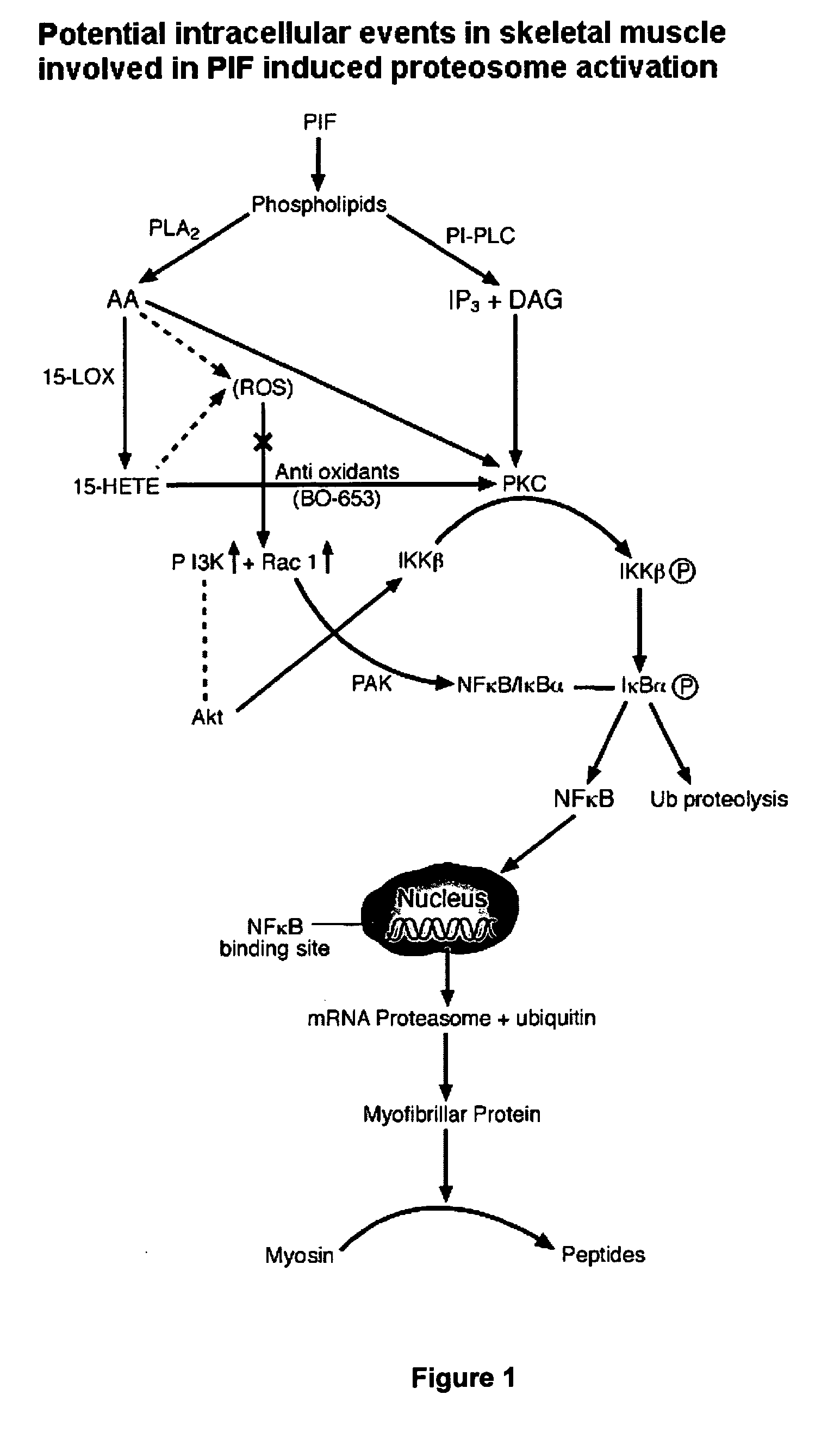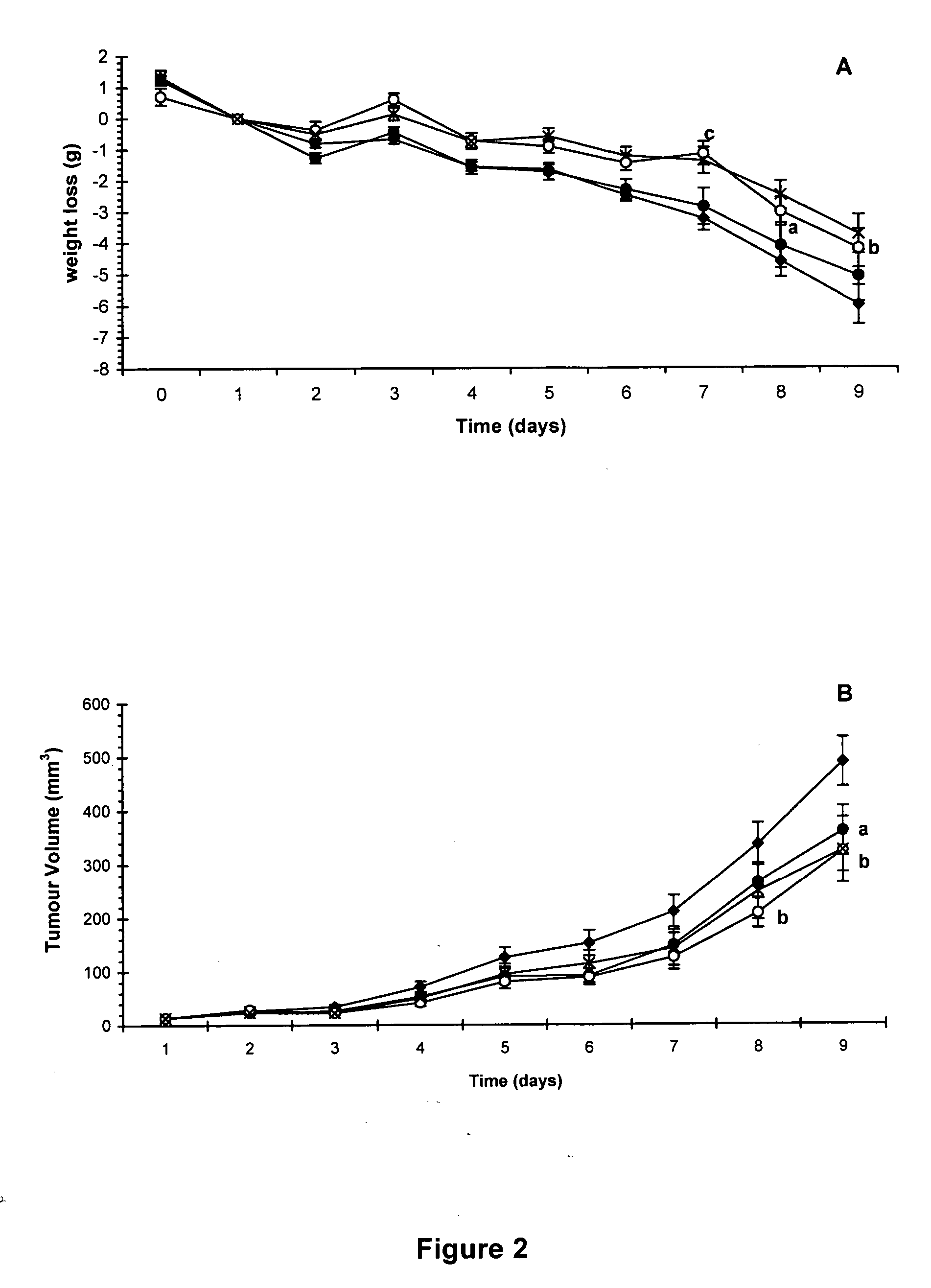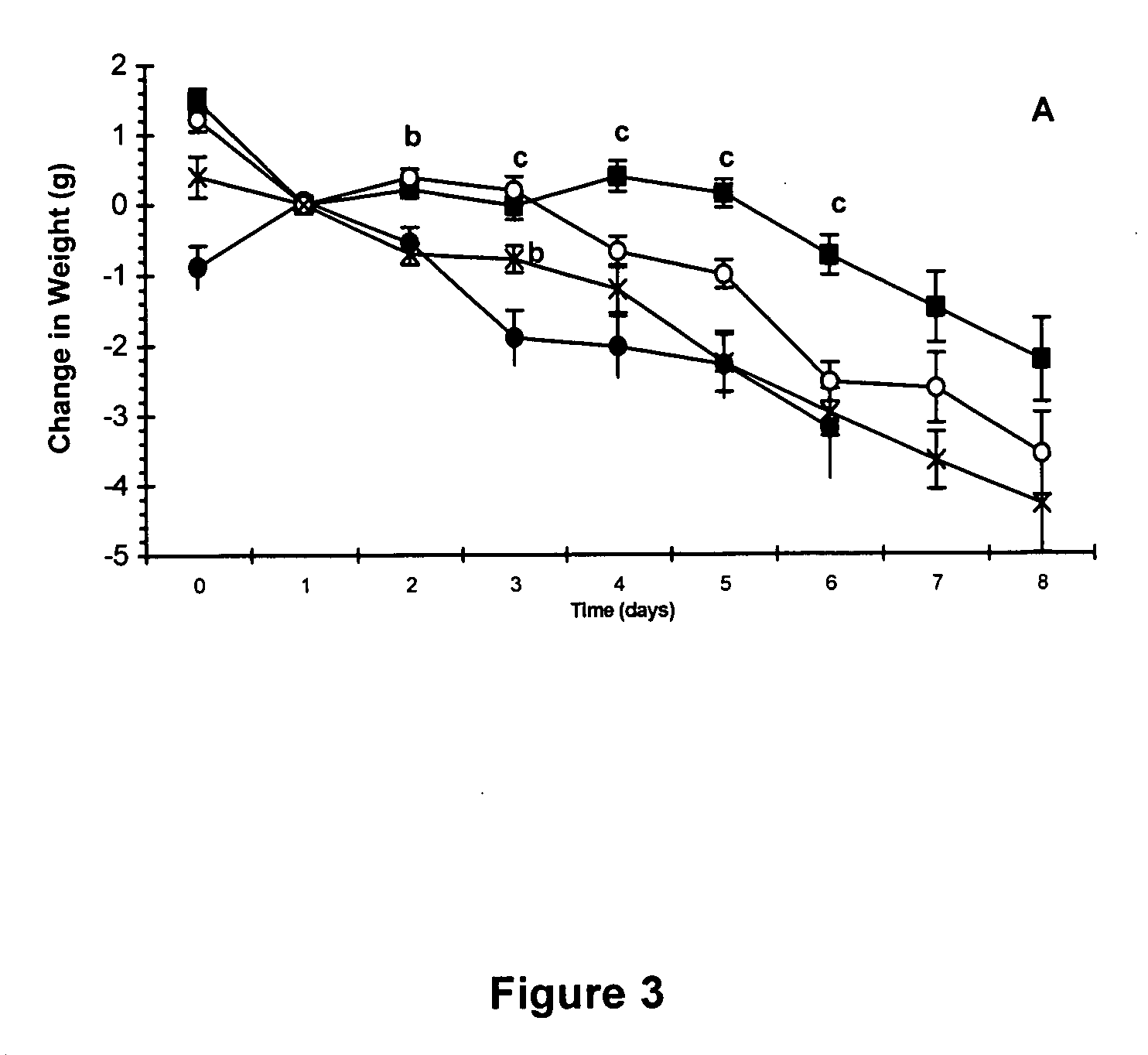HMB compositions and uses thereof
a technology of compositions and hmb, applied in the field of hmb compositions and uses thereof, can solve the problems of weight loss, affecting overall prognosis, significant impact on morbidity and mortality, etc., and achieve the effect of reducing tumor growth ra
- Summary
- Abstract
- Description
- Claims
- Application Information
AI Technical Summary
Benefits of technology
Problems solved by technology
Method used
Image
Examples
example i
Prevention of Weight Loss and Attenuation of Protein Degradation in Animals with Cancer Cachexia
[0115] This study evaluates the effect of HMB, in comparison with EPA or combination, on weight loss induced by the MAC16 tumor and the mechanisms involved. Weight loss induced by the MAC16 tumor is primarily induced by PIF.
[0116] Pure strain male NMRI mice (average weight 25 g) were obtained from our own inbred colony and were transplanted with fragments of the MAC16 tumor s.c. into the flank by means of a trochar, selecting from donor animals with established weight loss as described in Bibby, M. C. et al. Characterization of a transplantable adenocarcinoma of the mouse colon producing cachexia in recipient animals. J. Natl. Cancer Inst., 78: 539-546, 1987. Transplanted animals were fed a rat and mouse breeding diet (Special Diet Services, Witham, United Kingdom) and water ad libitum, and weight loss was evident 10-12 days after tumor implantation. Animals just prior to the developmen...
example ii
Attenuation of Tumor Growth in Animals
[0124] The animal study described in Example I above also evaluated the effect of HMB on tumor growth rate in MAC16 cachectic tumor-bearing mice. The experiment was conducted as described in Example I.
[0125] A dose-response relationship of HMB alone on tumor growth rate in mice bearing the MAC16 tumor is shown in FIG. 2B. Differences from the control group are indicated as a, p<0.05; b, p<0.01 and c, p<0.005. Doses of HMB greater than 0.125 g / kg caused a significant reduction in tumor growth rate. Attenuation of tumor growth was not accompanied by an alteration in food and water intake.
example iii
Attenuation of Protein Degradation in Murine Myotubes
[0126] This study examines the effect of HMB on PIF-induced protein degradation and signalling pathways in murine myotubes to determine the mechanism of the attenuation of the increased expression of the ubiquitin-proteasome proteolytic pathway.
[0127] C2C12 myotubes were routinely passaged in DMEM supplemented with 10% FCS, glutamine and 1% penicillin-streptomycin under an atmosphere of 10% CO2 in air at 37° C. Myotubes were formed by allowing confluent cultures to differentiate in DMEM containing 2% HS, with medium changes every 2 days.
[0128] PIF was purified from solid MAC16 tumors (Todorov, P. et al. Characterization of a cancer cachectic factor. Nature, 379: 739-742, 1996.) excised from mice with a weight loss of 20 to 25%. Tumors were homogenised in 10 mM Tris-HCl, pH 8.0, containing 0.5 mM phenylmethylsulfonyl fluoride, 0.5 mM EGTA and 1 mM dithiothreitol at a concentration of 5 ml / g tumor. Solid ammonium sulfate was adde...
PUM
| Property | Measurement | Unit |
|---|---|---|
| weight-loss | aaaaa | aaaaa |
| weight-loss | aaaaa | aaaaa |
| weight | aaaaa | aaaaa |
Abstract
Description
Claims
Application Information
 Login to View More
Login to View More - R&D
- Intellectual Property
- Life Sciences
- Materials
- Tech Scout
- Unparalleled Data Quality
- Higher Quality Content
- 60% Fewer Hallucinations
Browse by: Latest US Patents, China's latest patents, Technical Efficacy Thesaurus, Application Domain, Technology Topic, Popular Technical Reports.
© 2025 PatSnap. All rights reserved.Legal|Privacy policy|Modern Slavery Act Transparency Statement|Sitemap|About US| Contact US: help@patsnap.com



